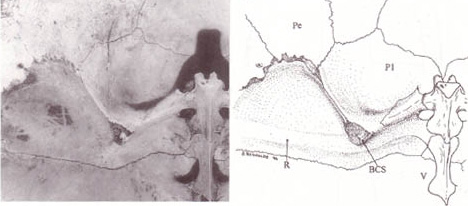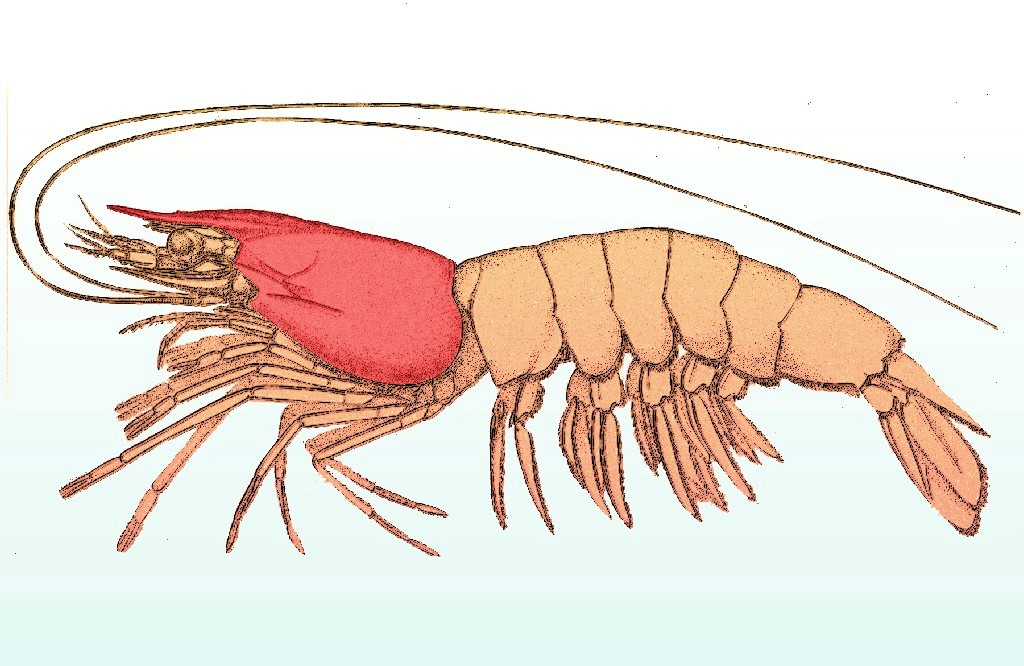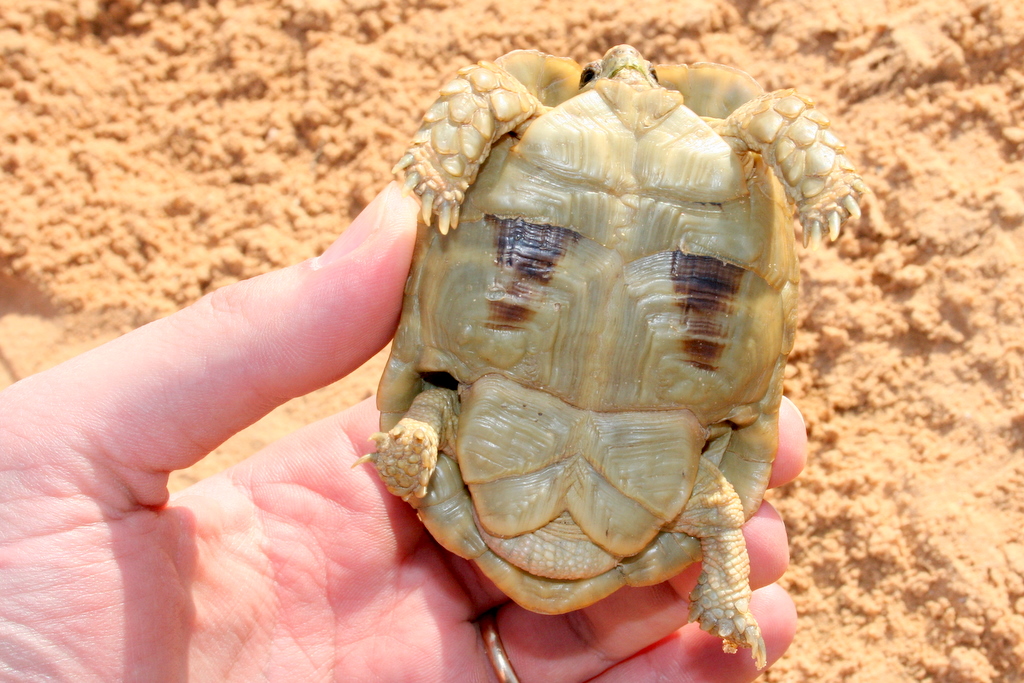|
Testudo (genus)
''Testudo'', the Mediterranean tortoises, are a genus of tortoises found in North Africa, Western Asia, and Europe. Several species are under threat in the wild, mainly from habitat destruction. Background They are small tortoises, ranging in length from 7.0 to 35 cm and in weight from 0.7 to 7.0 kg. Systematics The systematics and taxonomy of ''Testudo'' is notoriously problematic. Highfield and Martin commented: Synonymies on ''Testudo'' are notoriously difficult to compile with any degree of accuracy. The status of species referred has undergone a great many changes, each change introducing an additional level of complexity and making bibliographic research on the taxa extremely difficult. Most early and not a few later checklists contain a very high proportion of entirely spurious entries, and a considerable number of described species are now considered invalid – either because they are homonyms, non-binomial or for some other reason. Since then, DNA sequence ... [...More Info...] [...Related Items...] OR: [Wikipedia] [Google] [Baidu] |
Greek Tortoise
Greek tortoise (''Testudo graeca''), also known as the spur-thighed tortoise or Moorish tortoise, is a species of tortoise in the family Testudinidae. It is a medium sized herbivorous testudinae, widely distributed in the Mediterranean basin, Mediterranean region. ''Testudo graeca'' is recognized for its longevity, with verified lifespans exceeding 100 years and anecdotal reports suggesting ages over 125 years. Among reptiles, it has one of the largest known genomes. Geographic range The geographic distribution of the Greek tortoise (''Testudo graeca'') includes North Africa, Southern Europe, and Western Asia, Southwest Asia. It is commonly found along the Black Sea Caucasian Riviera, coast of the Caucasus, extending from Anapa, Russia, to Sukhumi, Abkhazia, Georgia (country), Georgia. Additional populations are present in parts of Georgia (country), Georgia, Armenia, Iran, and Azerbaijan. Evolution The oldest confirmed fossil attributed to ''Testudo graeca'' originates from ... [...More Info...] [...Related Items...] OR: [Wikipedia] [Google] [Baidu] |
Paleobiogeographical
Biogeography is the study of the distribution of species and ecosystems in geographic space and through geological time. Organisms and biological communities often vary in a regular fashion along geographic gradients of latitude, elevation, isolation and habitat area. Phytogeography is the branch of biogeography that studies the distribution of plants. Zoogeography is the branch that studies distribution of animals. Mycogeography is the branch that studies distribution of fungi, such as mushrooms. Knowledge of spatial variation in the numbers and types of organisms is as vital to us today as it was to our early human ancestors, as we adapt to heterogeneous but geographically predictable environments. Biogeography is an integrative field of inquiry that unites concepts and information from ecology, evolutionary biology, taxonomy, geology, physical geography, palaeontology, and climatology. Modern biogeographic research combines information and ideas from many fields, from the ... [...More Info...] [...Related Items...] OR: [Wikipedia] [Google] [Baidu] |
Plastron
The turtle shell is a shield for the ventral and dorsal parts of turtles (the Order (biology), order Testudines), completely enclosing all the turtle's vital organs and in some cases even the head. It is constructed of modified bony elements such as the ribs, parts of the pelvis and other bones found in most reptiles. The bone of the shell consists of both skeletal and dermal bone, showing that the complete enclosure of the shell likely evolved by including dermal armor into the rib cage. The turtle's shell is an important study, not just because of the apparent protection it provides for the animal but also as an identification tool, in particular with fossils, as the shell is one of the likely parts of a turtle to survive fossilization. Hence understanding the shell structure in living species provides comparable material with fossils. The shell of the hawksbill turtle, among other species, has been used as a material for a wide range of small decorative and practical items sin ... [...More Info...] [...Related Items...] OR: [Wikipedia] [Google] [Baidu] |
Carapace
A carapace is a dorsal (upper) section of the exoskeleton or shell in a number of animal groups, including arthropods, such as crustaceans and arachnids, as well as vertebrates, such as turtles and tortoises. In turtles and tortoises, the underside is called the plastron. In botany, a carapace refers to the hard outer cover of a seed which protects the inner embryo. Crustaceans In crustaceans, the carapace functions as a protective cover over the cephalothorax (i.e., the fused head and thorax, as distinct from the abdomen behind). Where it projects forward beyond the eyes, this projection is called a rostrum. The carapace is calcified to varying degrees in different crustaceans. Zooplankton within the phylum Crustacea also have a carapace. These include Cladocera, ostracods, and isopods, but isopods only have a developed "cephalic shield" carapace covering the head. Arachnids In arachnids, the carapace is formed by the fusion of prosomal tergites into a single pl ... [...More Info...] [...Related Items...] OR: [Wikipedia] [Google] [Baidu] |
Egyptian Tortoise
Kleinmann's tortoise (''Testudo kleinmanni''), also called commonly the Egyptian tortoise, Leith's tortoise, and the Negev tortoise, is a critically endangered species of cryptodire turtle in the family Testudinidae. The species is native to Libya and possibly extinct in Egypt. The species was once more widespread, but its numbers are now dwindling, and complete extinction in the wild is a looming threat unless more actions are taken to protect this species. Etymology The specific name, ''kleinmanni'', is in honor of , a French stockbroker who collected the holotype in 1875. The specific name, ''werneri'' (of the synonym ''Testudo werneri)'', is in honor of Israeli herpetologist Yehudah L. Werner. Description Kleinmann's tortoise is the smallest tortoise in the Northern Hemisphere. Females are larger than males; males are more slender and have a longer tail. The carapace has a high dome, and ranges in color from ivory to pale gold to dark brown to pink or dull yellow. Th ... [...More Info...] [...Related Items...] OR: [Wikipedia] [Google] [Baidu] |
Nabeul Tortoise
The Tunisian tortoise or Nabeul tortoise (''Testudo graeca nabeulensis'') is a subspecies of Greek tortoises. It was originally described as a new species in 1990, and even placed in a distinct genus. The spur-thighed or "Greek" tortoises are usually collectively referred to as ''Testudo graeca'', but this covers a wide variety of subspecies that have very different ecological and morphological characteristics and appear to comprise at least three phylogenetic lineages.van der Kuyl, Antoinette C.; Ballasina, Donato L. Ph. & Zorgdrager, Fokla (2005): Mitochondrial haplotype diversity in the tortoise species ''Testudo graeca'' from North Africa and the Middle East. '' BMC Evol. Biol.'' 5: 29. (HTML/PDF fulltext + supplementary material) As its name implies, it is found in Tunisia and nearby Algeria. Description and ecology The Tunisian tortoise is a relatively small tortoise. The adult males usually have carapaces that seldom exceed 13 cm (about 4.5 in), whilst the adult fe ... [...More Info...] [...Related Items...] OR: [Wikipedia] [Google] [Baidu] |
Araxes Tortoise
The Armenian tortoise (''Testudo graeca armeniaca'') or Araxes tortoise is a subspecies of the Greek tortoise. Distribution It can be found in Armenia, mainly in semi-desert habitats of Araks Valley, as well as in Tavush Province Tavush (, ) is a administrative divisions of Armenia, province of Armenia located at the northeast of Armenia, bordered by Georgia (country), Georgia from the north and Azerbaijan from the east. Internally, Tavush borders the Gegharkunik Province .... Biota and climate It can be found in various habitats, including the dry steppes and grassy slopes of hills or mountains with bushes, forests, meadows, and fields. It avoids the saline soils and areas with thick vegetation. Description This turtle has a flattened carapace, dark brown and yellow-cream in color, with a height equal to half the length of the carapace. The "annual rings" are clearly recognizable. The "toes" on front legs are flat and adapted for digging. Its size varies from 20 to 23&n ... [...More Info...] [...Related Items...] OR: [Wikipedia] [Google] [Baidu] |
Spur-thighed Tortoise
Greek tortoise (''Testudo graeca''), also known as the spur-thighed tortoise or Moorish tortoise, is a species of tortoise in the family Testudinidae. It is a medium sized herbivorous testudinae, widely distributed in the Mediterranean basin, Mediterranean region. ''Testudo graeca'' is recognized for its longevity, with verified lifespans exceeding 100 years and anecdotal reports suggesting ages over 125 years. Among reptiles, it has one of the largest known genomes. Geographic range The geographic distribution of the Greek tortoise (''Testudo graeca'') includes North Africa, Southern Europe, and Western Asia, Southwest Asia. It is commonly found along the Black Sea Caucasian Riviera, coast of the Caucasus, extending from Anapa, Russia, to Sukhumi, Abkhazia, Georgia (country), Georgia. Additional populations are present in parts of Georgia (country), Georgia, Armenia, Iran, and Azerbaijan. Evolution The oldest confirmed fossil attributed to ''Testudo graeca'' originates from ... [...More Info...] [...Related Items...] OR: [Wikipedia] [Google] [Baidu] |
Testudo Hellenica
''Testudo hellenica'' is an extinct genus of tortoise of the genus '' Testudo'' from the Miocene (Vallesian) Nea Messimvria Formation (Zone MN 10) of Greece. ''T. hellenica'' is the earliest known crown-''Testudo'' from Greece (according to Garcia ''et al.'', 2020), since the next oldest ''Testudo'' species, '' T. marmorum'', from Greece come from the Turolian (7.3-7.2 ma) Pikermi beds.Böhme M, Spassov N, Ebner M, Geraads D, Hristova L, Kirscher U, et al (2017) Messinian age and savannah environment of the possible hominin ”''Graecopithecus''” from Europe. Plos one: https://doi.org/10.1371/journal.pone.0177347. ''T. hellenica'' is important for understanding the radiation of the evolutionary history of the lineage of the ''Testudo'' genus, pushing it back from 7 Ma (2017) and 8 Ma (2018) to 9.1-9 Ma (2020). Discovery and naming The holotype, a carapace with a preserved plastron, was discovered in the Ravin de la Pluie, Axios Valley from fossil sediments ranging from 9.149 ... [...More Info...] [...Related Items...] OR: [Wikipedia] [Google] [Baidu] |
Hermann's Tortoise
The Hermann's tortoise (''Testudo hermanni)'' is a species of tortoise native to Europe. Etymology The specific epithet, ''hermanni'', honors French naturalist Johann Hermann. Beolens, Bo; Watkins, Michael; Grayson, Michael (2011). ''The Eponym Dictionary of Reptiles''. Baltimore: Johns Hopkins University Press. xiii + 296 pp. . (''Testudo hermanni'', p. 121; ''T. h. boettgeri'', p. 29). The subspecific name, ''boettgeri'', honors German herpetologist Oskar Boettger. Taxonomy Two subspecies are known: the western Hermann's tortoise (''T. h. hermanni)'' and the eastern Hermann's tortoise (''T. h. boettgeri)''. Sometimes mentioned as a subspecies, ''T. h. peleponnesica'' is not yet confirmed to be genetically different from ''T. h. boettgeri''. In 2006, Hermann's tortoise was suggested to be moved to the genus ''Eurotestudo'' and to bring the subspecies to the rank of species (''Eurotestudo hermanni'' and ''Eurotestudo boettgeri)''. Although some factors indicate this might ... [...More Info...] [...Related Items...] OR: [Wikipedia] [Google] [Baidu] |
Russian Tortoise
The Russian tortoise (''Testudo horsfieldii)'', also commonly known as the Afghan tortoise, the Central Asian tortoise, the four-clawed tortoise, the four-toed tortoise, Horsfield's tortoise, the Russian steppe tortoise, the Soviet Tortoise, and the steppe tortoise, is a threatened species of tortoise in the family Testudinidae. The species is endemic to Central Asia from the Caspian Sea south through Iran, Pakistan and Afghanistan, and east across Kazakhstan to Xinjiang, China. www.reptile-database.org. Human activities in its native habitat contribute to its threatened status. Two Russian tortoises were the first Earth inhabitants to travel to and circle the Moon, on Zond 5 in September 1968. Etymology Both the specific name, ''horsfieldii'', and the common name "Horsfield's tortoise" are in honor of the American naturalist Thomas Horsfield. He worked in Java (1796) and for the East India Company and later became a friend of Sir Thomas Raffies. xiii + 296 pp. (''Testudo ho ... [...More Info...] [...Related Items...] OR: [Wikipedia] [Google] [Baidu] |






